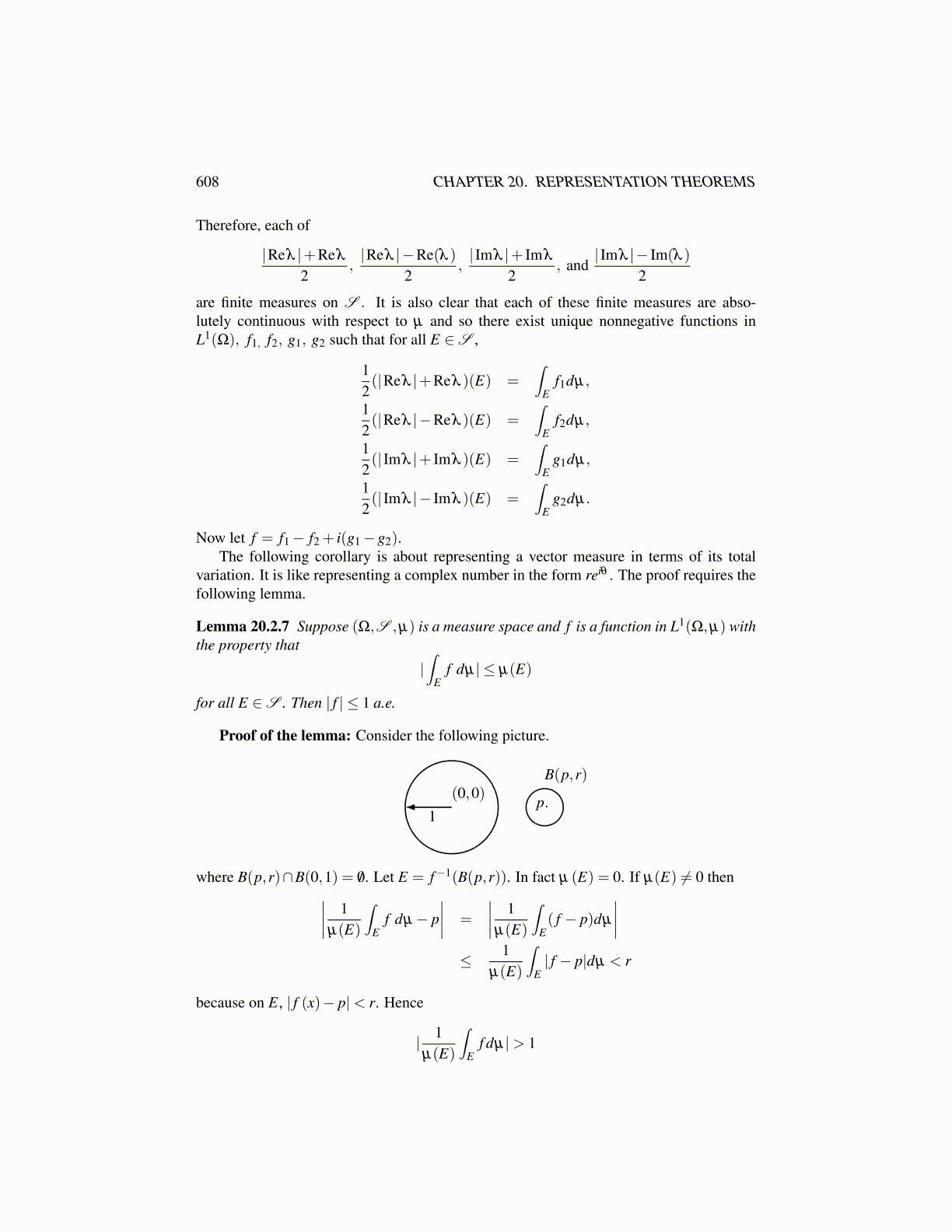
608 CHAPTER 20. REPRESENTATION THEOREMS
Therefore, each of
|Reλ |+Reλ
2,|Reλ |−Re(λ )
2,| Imλ |+ Imλ
2, and
| Imλ |− Im(λ )
2
are finite measures on S . It is also clear that each of these finite measures are abso-lutely continuous with respect to µ and so there exist unique nonnegative functions inL1(Ω), f1, f2, g1, g2 such that for all E ∈S ,
12(|Reλ |+Reλ )(E) =
∫E
f1dµ,
12(|Reλ |−Reλ )(E) =
∫E
f2dµ,
12(| Imλ |+ Imλ )(E) =
∫E
g1dµ,
12(| Imλ |− Imλ )(E) =
∫E
g2dµ.
Now let f = f1− f2 + i(g1−g2).The following corollary is about representing a vector measure in terms of its total
variation. It is like representing a complex number in the form reiθ . The proof requires thefollowing lemma.
Lemma 20.2.7 Suppose (Ω,S ,µ) is a measure space and f is a function in L1(Ω,µ) withthe property that
|∫
Ef dµ| ≤ µ(E)
for all E ∈S . Then | f | ≤ 1 a.e.
Proof of the lemma: Consider the following picture.
1(0,0) .p
B(p,r)
where B(p,r)∩B(0,1) = /0. Let E = f−1(B(p,r)). In fact µ (E) = 0. If µ(E) ̸= 0 then∣∣∣∣ 1µ(E)
∫E
f dµ− p∣∣∣∣ =
∣∣∣∣ 1µ(E)
∫E( f − p)dµ
∣∣∣∣≤ 1
µ(E)
∫E| f − p|dµ < r
because on E, | f (x)− p|< r. Hence
| 1µ(E)
∫E
f dµ|> 1